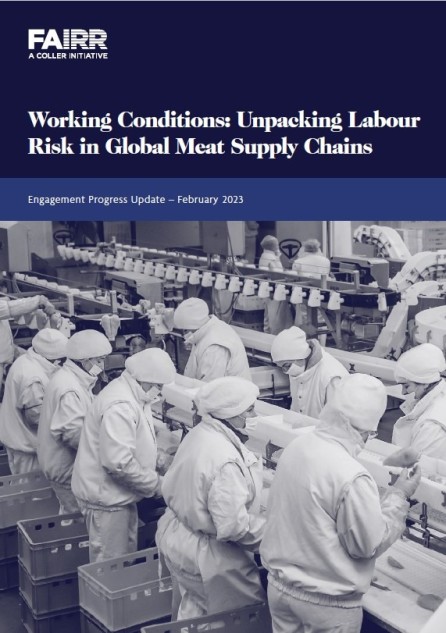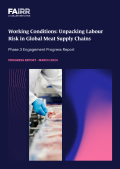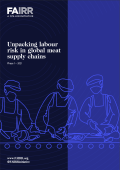Executive Summary
During the height of the pandemic, the meat processing sector was forced to take unprecedented action to address labour risk, which included the introduction of sick pay and additional health and safety measures. However, very few of the measures taken have survived as the sector returns to business-as-usual.
In 2022, labour shortages remained prevalent in the industry. A lack of willing workers following the scandals that were widely reported by the media during the height of the pandemic has impacted business productivity and exacerbated production setbacks. These shortages have been worsened by national-level shifts such as Brexit in the UK and the Trump administration’s immigration policies in the US. However, despite these challenges, companies are failing to address the structural challenges including health and safety that need to change in order to attract and retain workers. Instead, some companies are increasing their employment of refugee and migrant workers through government schemes without recognising the need for additional controls to mitigate the elevated human rights risk faced by these vulnerable workers.
Along with industry labour shortages, growing regulatory requirements on social risk reporting should act as a warning that long-established labour management practices and disclosure levels are insufficient to maintain a stable, productive, and healthy workforce. Current disclosure indicates that companies are not doing enough to improve working conditions at the plant-level. With this labour environment in mind, the key findings of this report point to a lack of prioritisation of worker voice and health and safety for companies in FAIRR’s engagement:
All companies cover the availability and accessibility of grievance mechanisms in their public reporting. However, many companies do not provide a breakdown on the type of grievances received or how they are addressed, which raises questions around the effectiveness of these mechanisms. BRF is the first company in the engagement to include disclosure on its grievance resolution process.
Temporary sick pay measures are not sufficient to reduce injury risk and disease spread. Tyson Foods is the only company that has acted on learnings from the pandemic by implementing a permanent sick pay policy.
Statements of support for worker representation are not backed up by corporate actions. Companies are overlooking union and internal worker representation mechanisms as a way to identify and address plant-level risks.
No company publicly reports on efforts to drive a just transition. However, four companies acknowledged the need for a social risk assessment of their climate strategy in their discussion with FAIRR and investors.
Company willingness to engage with the coalition has significantly improved. The coalition successfully held calls with six of seven engagement companies, compared to five in 2021 – and dialogues have been markedly more open.
Report Highlights
The findings of this report can help investors:
Assess the most material areas of social risk in the meat sector.
Understand what key risks are facing meat producers today through in-depth case studies.
Access best and good practice examples of labour and reporting practices.
Compare and contrast the engagement companies across a detailed range of factors.
Assess specific companies’ performance and progress since last year of the engagement.
Downloads
Executive Summary
Overview of key risks to workers
Overview of the engagement
Company performance at a glance
Company benchmark overview
Detailed individual company analysis by factor
Best practice examples
3 in-depth case studies on social risk in the meat sector
Breakdown of the methodology
Public Progress ReportMembers’ Report
Overview of key risks to workers
Overview of the engagement
Company performance at a glance
Company benchmark overview
Detailed individual company analysis by factor
Best practice examples
3 in-depth case studies on social risk in the meat sector
Breakdown of the methodology



